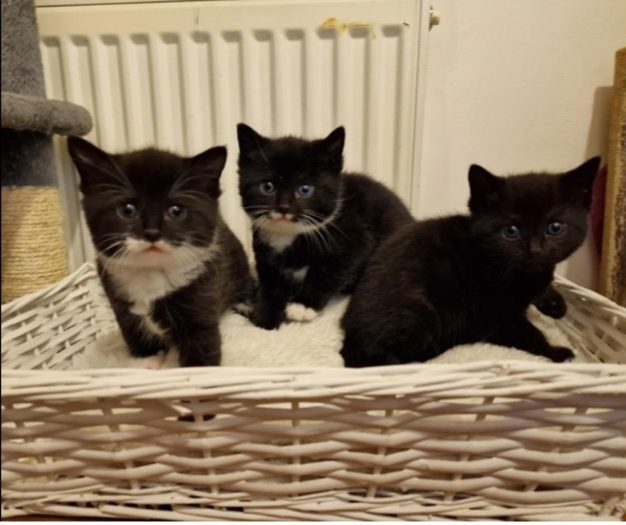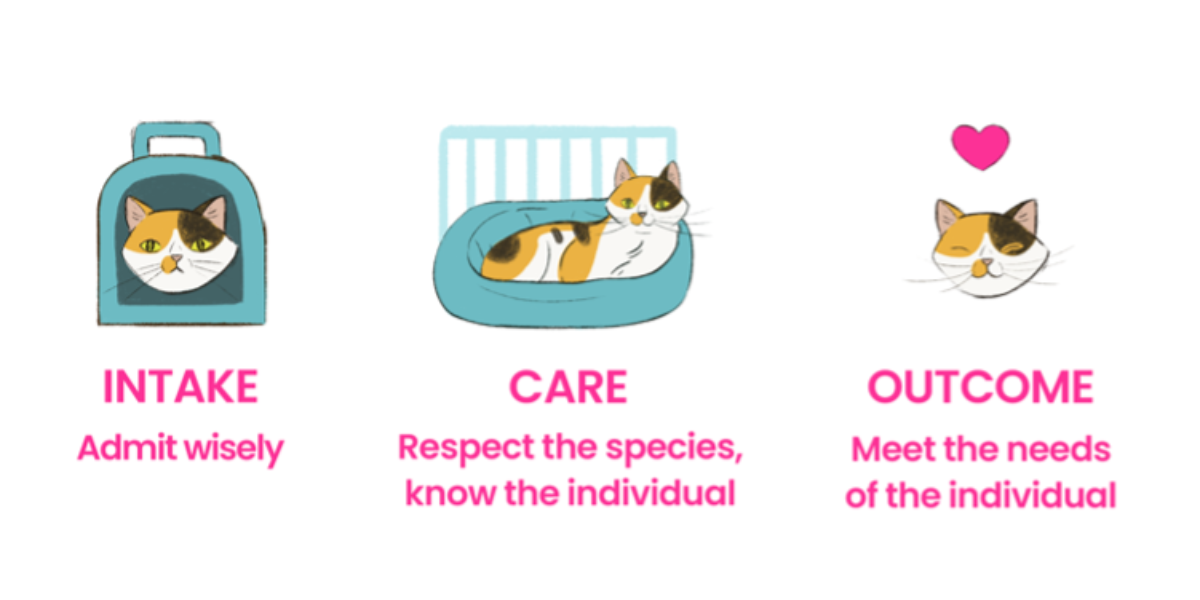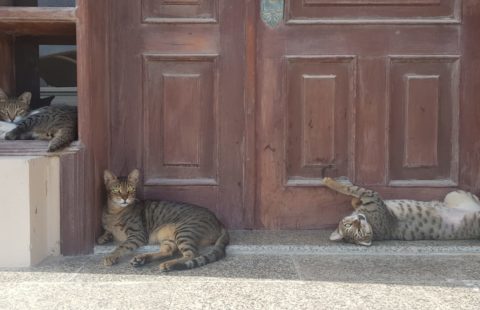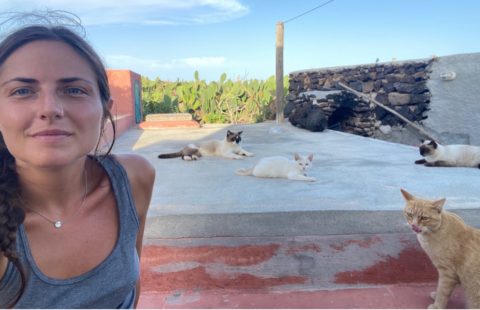The most important thing about completing the Cat Friendly Homing (CFH) Programme is that organisations go on and continue to evolve and develop their Cat Friendly Homing strategies. Vicky Halls, Head of Unowned Cats at International Cat Care went back to Hayley Plows from Here for Cats (HFC) in Surrey, England, to see how things were going. Here’s what she had to say…
Vicky: Hayley, when did you complete the CFH programme?
Hayley: We completed the Cat Friendly Homing Programme in June 2021.
V: We encourage participants in the programme to see this as something permanent in the organisation and that any changes made are maintained in the future. Have you managed to achieve this?
H: Yes definitely! Part of that is to ensure we are collecting and analysing data accurately to fully demonstrate the positive changes that have occurred. We now have a really valuable template we can update on a quarterly basis where we are logging all kinds of useful stats which helps us to make improvements or changes where and when they are needed.

Hayley Plows from Here For Cats
V: What have been your biggest successes so far?
H: Since completing the Becoming a Cat Friendly Homing programme I feel we are better at managing public expectations surrounding stray and unowned cats overall. We definitely didn’t bring in as many as we could have last year and would have previously before we applied more CFH principles. We encourage the caregiver to put in some of the groundwork first, we don’t just jump in. If the cat is badly injured we prioritise, but otherwise, try to manage them in situ in most cases now. We’re also proud that, alongside our overall annual intake figure, 18 cats were directly rehomed and never physically came into our care which can only be less stressful for the cats involved.
CFH principles have also led to the creation of fewer difficult scenarios where background information is less likely to be available. On some occasions, we have planned two options upon intake. This is helpful particularly prior to trapping cats we’ve become involved with that are displaying fearful behaviour. If they are not socialised or have previously lived an ‘inbetweener’ lifestyle, we aren’t placing them into more stressful environments. For example, when an owner has died we sometimes don’t have all the answers to all of our usual intake questions. In one particular case, we had lined up a foster carer, but also a stable yard so that once we trap the cat, we had options to manage her stress levels and find the right long-term outcome to suit her needs. This also improves our length of stay (LoS) making more space for cats who really need a foster home.
We’ve also been working in collaboration with a very handy contact at Surrey Missing Pet Support – a Community Interest Company (C.I.C), who are fantastic with solving cat mysteries! Vicky will do all the groundwork for us, like making posters, paper collaring strays, making more enquires with neighbours and putting up social media posts and scanning those cats she can. This works really well because then only the cats that definitely need to come into our organisation do. She refers [them] to us and they go onto our waiting list for transfer in when we have availability.
However, sadly we are seeing more members of the public unprepared to wait for charities to assist with strays and are taking matters into their own hands and taking them to vet practices instead. These poor cats still end up with us or other organisations, simply because the vets can’t keep them for 7 days – giving owners a chance to come forward. The cats are sometimes taken in without any history at all, because either the people abandon the cat or won’t give the information, or the vet staff don’t take any or enough information from the finder because they are too overstretched. This is something we have been working hard to change and work with vet practices to ensure we have as much information upon intake as possible. But this is another reason why it can be so difficult for charities to reunite cats [with] their owners or caregivers.

Image courtesy of Hayley Plows (Here For Cats)
V: It sounds like the intake goals you set for yourselves are really working, taking into account the constant challenges that you face. What other changes have you successfully implemented?
H: Our new intake interview system has been really helpful with settling cats into our care. We’ve now got an amazing dedicated volunteer doing around a 30-minute plus interview with the previous owners of cats being signed over. We ask far more questions than before about their cat to ensure we are making the right decisions on their care with us and the adoptive homes we place them into. She also writes the majority of our rehoming profiles when we advertise cats so it’s [a] much more streamlined, accurate and consistent way of working.
V: What has been your experience of the financial crisis here in the UK, has it had an impact on the demand for your services?
H: We assisted 31 owners financially with vet fees last year, allowing those owners to keep their cats and not sign them over. I am trying to ensure that, if the reason for relinquishment is financial, that HFC assists where we can – but currently whilst this is rising, that isn’t the biggest issue.
I would say one of the top reasons for people to give up their cats last year was related to ‘problem behaviour’. A lot of the people we have spoken to had even sought professional help and were at their wits’ end so had already persevered as long as they could.
Many cats are finding other pets or children/babies in their homes stressful and have started displaying unwanted behaviours that are now intolerable. I sadly feel that a lot of people who got cats during lockdown, were either making uneducated or ill-informed decisions about the kind of cats they brought home. Many had also struggled to get their cat neutered during the pandemic itself. Either people now have many more cats to manage at home or have spraying or roaming cats with abscesses or other illnesses relating to not being neutered. We’ve directly dealt with two awful pyometra cases in this last month (neither owners could afford the operation) and have heard of many others through the vets we use.
In addition, we are seeing the usual combination of unsuitable accommodation, landlords not allowing pets and sadly lots of cats left when owners pass away where they haven’t made provisions for their cats in their will or with family members etc. Even a few ‘rescued’ cats from Gumtree that the buyer or rescuer then couldn’t actually keep themselves. This is likely because there are still so many out there being sold on these unregulated sites.

Image courtesy of Hayley Plows (Here For Cats)
V: Thanks for this, Hayley, I am sure you will go from strength to strength, supported by Cat Friendly Homing principles.
H: Definitely, having the framework is really helpful! Whatever happens day to day, we have clear processes and can consider our options carefully and calmly. Trying not to feel pressured to make sudden or rash decisions is the hard part which can lead to poor outcomes for those cats we are trying to improve the lives of.
To learn more about Cat Friendly Homing, visit: https://icatcare.org/unowned-cats/cat-friendly-homing/
For more information and to support Here For Cats, visit: https://www.hereforcats.org/






